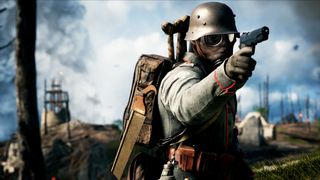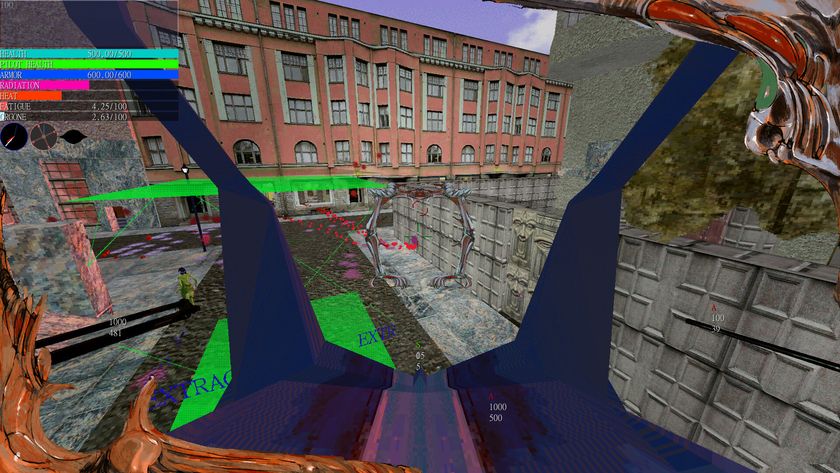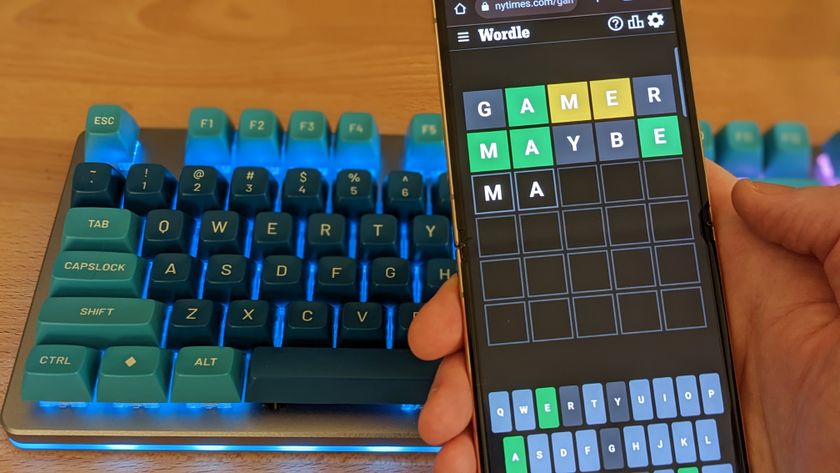Battlefield 1's Operations was 2016's best multiplayer mode
Intensity, history, and story bundled into one of our favorite things in FPSes.

After diving back into Battlefield 1 over the break, I feel like its Operations mode didn't get the affection it deserved in everyone's games of the year. Including ours, maybe.
Our Shooter of the Year was Titanfall 2 ("brilliant sci-fi high concepts that would not be out of place in a Half-Life sequel"), and Overwatch ("Blizzard are without equal when it comes to taking a complicated genre and making it accessible") our favorite multiplayer game in a bumper year for FPSes that also provided Devil Daggers, Killing Floor 2, Doom, Arma 3 Apex, Superhot, and the continued excellence of Rainbow Six Siege.
Each of these shooters contributed something significant to the genre, from heights of technical fidelity to worthy resurrections of Quake. But the way that Operations neutralizes some of Battlefield's long-standing weaknesses stands out as a big achievement.
It's simply a format that produces better stories.
Scale and focus
Battlefield has always been a 'more is more' proposition to FPS players: big maps, big player capacity, lots of DLC, a long list of unlockables, and infantry combat commingled with armor, naval, and aerial warfare in a variety of customizable vehicles. Counting PC Gamer favorites like Arma and Rising Storm, it's one of a couple FPSes that puts you shoulder-to-shoulder with 63 other players.
But that big scale has a bunch of downsides. It often means playing with people who shirk their responsibility to play the objective, instead opting to snipe from comfortable corner while their two dozen other teammates do the heavy lifting. And you rarely develop lasting rivalries with enemies: every opponent is an interchangeable face in the swirling, miles-wide death maelstrom.
It's a war fought without radios, too. BF1 restricts voice chat to the four other members of your squad, limiting your ability to strategize with most of your team. The intent of this is good (who wants 30 people yelling in your ear throughout a multiplayer match?) but its impact on strategy is felt whenever I play Conquest, BF1's standard flag-capture mode. The only person who's allowed to speak to everyone is BF1's announcer, and she's a lousy WWI commander. The way she spams everyone on my team with "We're losing Objective Butter" probably creates more chaos than coordination. My most unpleasant rounds are ones where I feel like I'm running around putting out fires at every flag, with no sustained sense of a frontline or feeling of progress through strategy.
Operations isn't a panacea to all of these Battlefield annoyances, but it does address them elegantly. By segmenting BF1's maps into multiple sectors that unlock as the attackers succeed, both teams are focused only on a couple of capture points at a time, not seven, like some Conquest maps. Operations mixes the size of Conquest (64 players) with the focus of Rush, BF's 24-man, attack-and-defend mode. It works wonderfully.
The biggest gaming news, reviews and hardware deals
Keep up to date with the most important stories and the best deals, as picked by the PC Gamer team.
The mode lessens the effort it takes to corral a massive group of players into a coherent strategy. Your duty is obvious when you're staring at one or two capture points, and I think it imbues each moment with a greater sense of urgency and responsibility. Once both points are simultaneously under attackers' control, they're permanently captured. All it takes is one coordinated surge, one effective vehicle, or a few killstreaking heroes to break a stalemate.
Battlefield has rarely cared about what side you're on.
It's simply a format that produces better stories—Operations guarantees that each match has a clear beginning, middle, and end. If the attackers deplete the pool of lives available to them, they don't lose outright. Instead, they're 'reinforced' by another battalion, and make a second (then third, if they fail) attempt while retaining control of any sectors. An unsuccessful attack also unlocks a train, zeppelin, or other map-specific behemoth as a bonus, and in some cases this helps balance the match.
That pattern of attacking, failure, and trying again creates pace as well as permanence within the match, and it allows you to experience multiple wins even if you ultimately lose the Operation, or vice versa. In these details DICE likely owes some credit to Red Orchestra 2, which explored some of these ideas in its Multiplayer Campaign mode.
A battle for identity
Battlefield has rarely cared about what side you're on. In BF4 the Chinese and American forces had access to the same, enormous pile of unlockable weapons and gear. I was among those who criticized Battlefield Hardline for the strange symmetry it exhibited between its cops and robbers. "... It's a bit contrived that both the cops and the crooks have to grab the cash," I wrote in 2014. "Why not design a mode where the police are simply guarding the money? I can't remember a heist movie where the police are trying to achieve the same goal as the criminals."
BF1 doesn't have interesting points of asymmetry between its factions, but it does take a step forward in expressing the identity of which side you're fighting for (and against) in Operations. Each match opens with a unique video. You hear an ordinary soldier tell you, in their native language, about the battle they and you are about to fight.
"We know why they have come. They have come for our oil. This black gold, so abundant here, is both a curse and a blessing. For it can turn nations into empires—but it also turns men into monsters," starts the monologue on defending side of the "Oil of Empires" operation, where you play as the Ottoman Empire against Britain. This is pure flavor and context, separated from the flyover briefing of the map's capture points that comes a moment later.
A lot was made of EA's choice and treatment of the World War I setting, and even though the WWI historian we showed Battlefield 1 to mostly gave it a thumbs-up, there's plenty of holes you can poke in BF1's treatment. But this prelude to Operations, small as it is, gives a believable, human voice to the soldier avatars you inhabit. It's bookended by a similar footnote that acknowledges, depending on whether the result matches reality, either the history of the battle or the alternate history. "Victory for the Ottomans in the Middle East would have been seen as a sign of renewed strength," the narrator says after an Ottoman victory. "If so, the power gained from controlling the world's oil supply would almost certainly would have seen the Ottoman government abandoning the support of The Central Powers."
Operations does these things—reverence for history, intensity, story generation—while being Battlefield's biggest mode ever. An Operation might be an hour commitment or more, depending on which map you draw and how closely the battle plays out, but it continues to be one of the most rewarding ways to spend my FPS time.

Evan's a hardcore FPS enthusiast who joined PC Gamer in 2008. After an era spent publishing reviews, news, and cover features, he now oversees editorial operations for PC Gamer worldwide, including setting policy, training, and editing stories written by the wider team. His most-played FPSes are CS:GO, Team Fortress 2, Team Fortress Classic, Rainbow Six Siege, and Arma 2. His first multiplayer FPS was Quake 2, played on serial LAN in his uncle's basement, the ideal conditions for instilling a lifelong fondness for fragging. Evan also leads production of the PC Gaming Show, the annual E3 showcase event dedicated to PC gaming.

EA CEO says the magic words 'Apex 2.0': It won't happen until after the next Battlefield, but 'this will not be the final incarnation of Apex'

The next game from Cruelty Squad's creator, a 'policing and punishment simulator', has dropped a new trailer showing off its gruesome mech combat
Most Popular








